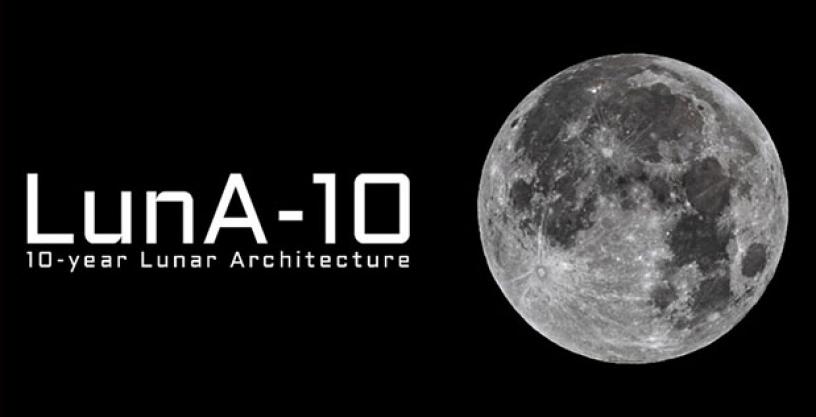
DARPA program shares update from rapid study of foundational commercial lunar infrastructure technology concepts
May 10, 2024
The expansion of commercial space capabilities has revolutionized ways to deliver mass and services around and to the Moon. Those capabilities could create a real off-Earth economy – if they’re able to operate jointly. There is a missing piece between how we approach lunar system development today and an integrated future lunar economy: an underlying analytical framework that emphasizes integrated models of economic activity. Charting a framework to move toward an era of “connectivity,” as opposed to the current era of “fractionation,” may reduce barriers to entry to the lunar surface. Such a framework could also chart a path toward shareable, scalable, sustainable systems that can work together, and may be the “rising tide” that lifts all lunar vessels.
The DARPA 10-Year Lunar Architecture (LunA-10) Capability Study aims to fuel commercial companies to work together to study what it may take to shift from the current paradigm, in which each system must organically support all the resources they need, to an era of interoperable lunar infrastructure within the next decade.
In the five months since the program kicked off, performers have collaborated to design new integrated system-level solutions that span multiple lunar services and define how their services and capabilities link together and could potentially scale. The LunA-10 Government Integration Team (GIT), composed of subject matter experts from various government agencies, has developed an analytical framework for what a future lunar economy could look like in the context of four program-developed, notional “Lunar Ages.” The GIT has also defined five enterprise value chains outlining the technical steps needed to get to a viable, sustainable commercial lunar economy.
At the Lunar Surface Innovation Consortium (LSIC) Spring Meeting, DARPA, LunA-10 performers, and the GIT shared the initial findings of their work with the lunar community. DARPA Program Manager Michael Nayak highlighted what each LunA-10 performer brought to the study, and underscored topics that have emerged from LunA-10 analysis as having potential for enabling a future lunar economy but that require further technical development. These include concepts such as Recyclable in-situ resource utilization (Re-ISRU), robotics as a service (RaaS), and aggregated thermal generation and rejection as a service, among others.
LunA-10 is a great example of the types of insights we can generate when we drive companies to break down vertically integrated siloes and collaborate to find new opportunities and limitations,” said Dr. Nayak. “The LunA-10 program has uncovered how current foundational technologies and capabilities could stitch together into a self-sustaining lunar economy, and where there are gaps that require further exploration and technology maturation.”
Members of the LunA-10 GIT presented the program’s preliminary analytical framework and enterprise value chains, mapped to 19 use cases. In breakout sessions at LSIC, LunA-10 performers shared posters of their study contributions for community discussion and input.
To view recordings of the DARPA LunA-10 LSIC presentations, including a keynote from DARPA STO Office Director Dr. Philip Root and the presentations by Dr. Nayak and the LunA-10 Government Integration Team, please visit the LSIC 2024 Spring Meeting website. Initial results from LunA-10 performers, as well as the preliminary analytical framework developed by the program, may be found here.
Additional Resource